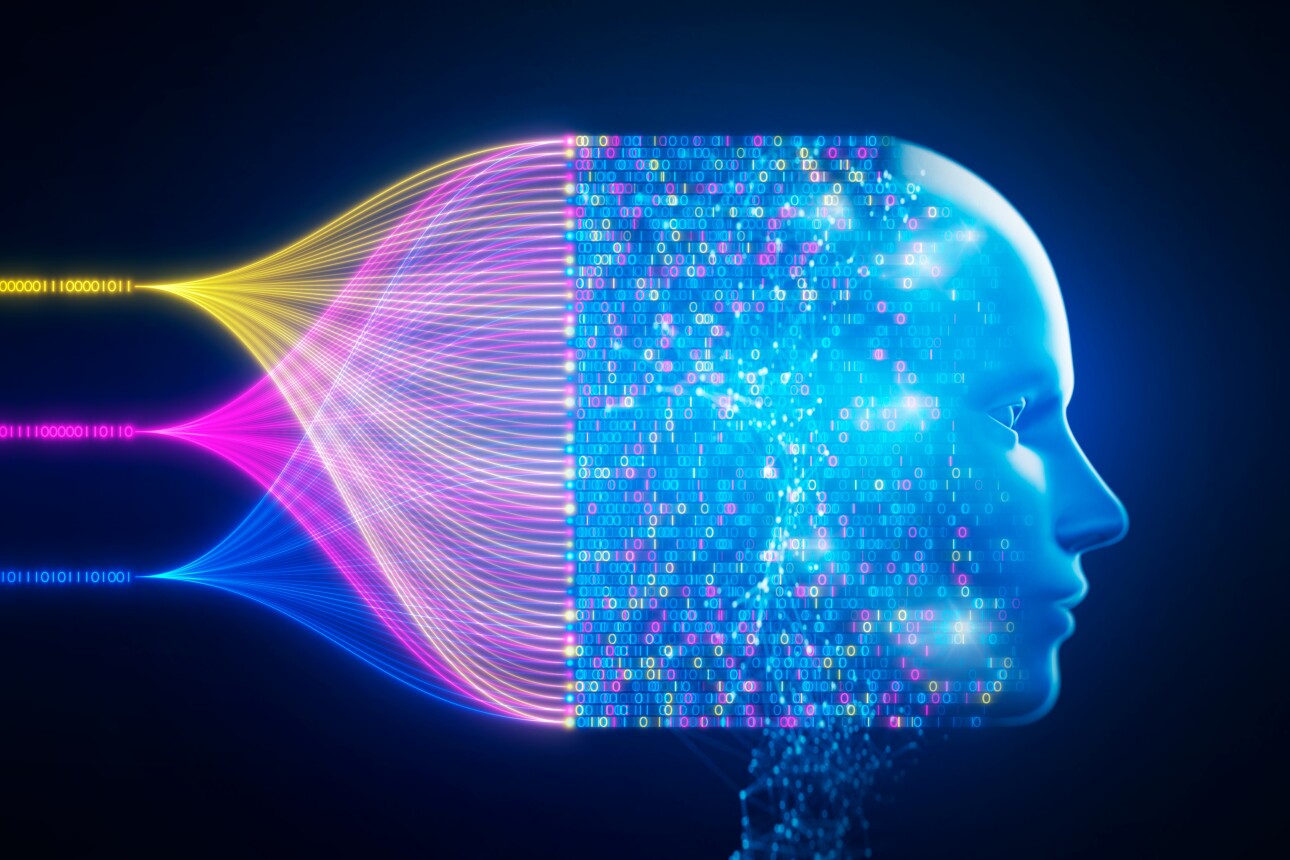Vector embeddings are numerical representations of data that capture the meaning or features of objects (like words, images, or concepts) as points in a multi-dimensional space, allowing machines to process and compare them efficiently. In essence, they are a way to translate complex information—such as words, sentences, images, or any other type of data—into lists of numbers that capture the underlying meaning and relationships within that data. These mathematical representations of data mimic human understanding, enabling a wide range of powerful artificial intelligence applications.
By transforming raw data into these sophisticated numerical representations, vector embeddings unlock the ability to perform complex analyses, identify patterns, and make predictions with unprecedented accuracy and efficiency. Vector embeddings are not new concepts, but thanks to algorithmic breakthroughs, they’ve become much more accessible (and useful) to modern businesses.
This article will explore the concept of vector embeddings in depth, examining how they work, why they're so powerful, and the myriad ways they're driving innovation in AI-powered technologies.
Whether you're a seasoned data scientist or new to the field of machine learning, understanding vector embeddings is foundational to understanding modern AI systems and their transformative potential across industries.

Key Takeaways
- Vector embeddings are numerical representations of data that capture meaning and relationships, enabling machines to process complex information efficiently and powering a wide range of AI applications.
- These embeddings excel at capturing semantic similarity, allowing for powerful applications like recommendation systems, semantic search, and natural language processing tasks.
- The integration of vector capabilities into core database systems, like InterSystems IRIS, enables more efficient and real-time AI applications by eliminating the need for separate vector databases and supporting diverse data types.
Understanding Vector Embeddings
At their core, vector embeddings are lists of numerical values that represent complex data in a way that machines can understand and process. These numerical representations allow computers to work with abstract concepts, like words or images, as if they were points in a mathematical (or "high-dimensional") space.
Let's break this down with an example. Imagine we want to represent the word "cat" as a vector embedding. It might look something like this:
[0.2, -0.5, 0.8, 0.1, -0.3, …]
Each number in this list corresponds to a dimension in a multi-dimensional space. In practice, these vectors often have hundreds or even thousands of dimensions, allowing them to capture subtle nuances of meaning. But what makes vector embeddings truly remarkable is their ability to capture semantic similarity in high-dimensional data.
In the world of vector embeddings, the meaning of words, images, or any other type of data can be represented as points in a multi-dimensional, vector space. The key insight is this: items with similar data points or characteristics end up close to each other in this space.
Imagine a vast space where every word in a language is a point. In this space, words with similar meanings cluster together. The word "cat" might be close to "kitten" and "feline," while "democracy" would be in a completely different region, perhaps near "government" and "election."

This spatial relationship allows AI systems to understand and process data in ways that mimic human understanding of similarity and association.
Here are some more defining characteristics of vector embeddings and how they relate to their use in vector search applications:
- Similarity: By calculating the distance between two vectors, we can measure how similar two words (or images, or any other embedded items) are. The closer the vectors, the more similar the items.
- Analogy: Vector embeddings can capture complex relationships. The classic example is: "king" - "man" + "woman" ≈ "queen". This works because the vector difference between "king" and "man" roughly represents the concept of "royalty", which when added to "woman" lands us close to "queen".
- Clustering: Words (or other items) with similar meanings naturally form clusters in the embedding space. This property is useful for tasks like topic modeling or document classification.
- Dimensionality: While we can't visualize high-dimensional spaces, the many dimensions of vector embeddings allow them to capture numerous aspects of meaning simultaneously. One dimension might relate to size, another to animacy, another to positivity, and so on.
This spatial relationship is not just a neat visualization trick. It's a powerful computational tool that allows machines to work with meaning in a mathematically rigorous way. When we perform mathematical operations on these vectors – adding them, subtracting them, measuring the distances between them – we're actually manipulating and comparing meanings.
For example, in a recommendation system, if we know a user likes a certain product, we can find its vector representation and then search for other products with similar vectors. This allows the system to make recommendations based on the inherent characteristics of the products, not just superficial categories.
Vector embeddings form the foundation of many modern AI systems. They're the reason why search engines can understand the intent behind your queries, why language models can generate coherent text, and why image recognition systems can identify objects with high accuracy.
By translating the complex, messy world of human concepts into a structured mathematical space, vector embeddings can be used to bridge the gap between human understanding and machine computation.

How Vector Embeddings Are Created
Vector embeddings are created through various sophisticated processes, with the goal of representing data in a way that captures its essential characteristics and relationships. This means transforming raw data – be it text, images, or other forms – into dense numerical vectors that capture the essence and relationships within the data. Let's explore some of the most common methods for creating embeddings:
Text Embeddings
For text data, several powerful models have been developed to create meaningful vector representations:
Word2Vec
Developed by researchers at Google, Word2Vec uses a shallow neural network to learn word embeddings. It comes in two flavors:
- Skip-gram: Predicts context words given a target word.
- Continuous Bag of Words (CBOW): Predicts a target word given its context.
Word2Vec is trained on large corpora of text, learning to predict words based on their context. Through this process, it develops vector representations that capture semantic relationships between words.
GloVe (Global Vectors for Word Representation)
Unlike Word2Vec, which is a predictive model, GloVe is a count-based model. It creates word embeddings by performing dimensionality reduction on the co-occurrence matrix of words. GloVe captures both local context (like Word2Vec) and global corpus statistics.
BERT (Bidirectional Encoder Representations from Transformers)
BERT represents a significant advance in NLP. It uses a transformer architecture to generate contextualized word and document embeddings. This means that the embedding for a word can change based on the surrounding context, allowing for more nuanced representations.
These models are trained on a massive corpus of text, often containing billions of words. Through the training process, they learn to predict words or contexts, and in doing so, develop rich representations of language that capture semantic and syntactic relationships.
The popular ChatGPT chat interface (powered by GPT-4) uses embeddings similar to those produced by models like BERT, which means it creates contextualized representations of words and text.

Image Embeddings
For visual data, Convolutional Neural Networks (CNNs) are the go-to method for creating embeddings:
- VGG, ResNet, Inception: These are popular CNN architectures used for image classification. While their primary purpose is classification, the penultimate layer of these networks can be used as an embedding. This layer typically captures high-level features of the image.
- Siamese Networks: These are used to generate embeddings specifically for comparing images. They're trained on pairs of images, learning to produce similar embeddings for similar images and dissimilar embeddings for different images.
CNNs learn to identify features in images hierarchically. The early layers typically detect simple features like edges and colors, while deeper layers combine these to recognize more complex patterns, objects, and scenes.
The final layers of the network can be thought of as a compact representation (embedding) of the image's content.
Other Types of Embeddings
While text and image embeddings are the most common, vector embeddings can be created for various types of data:
- Audio: Techniques like Mel-frequency cepstral coefficients (MFCCs) or deep learning models like WaveNet can be used to create embeddings from audio data.
- Graph Embeddings: Algorithms like Node2Vec or Graph Convolutional Networks can create embeddings that represent nodes in a graph, capturing the structure of the network.
- User Behavior Embeddings: In recommendation systems, user actions (clicks, purchases, etc.) can be used to create embeddings that represent user preferences.

Applications of Vector Embeddings
Vector embeddings power a wide range of AI applications across various domains. Let's explore some key applications and the types of embeddings best suited for each:
1. Natural Language Processing (NLP)
- Sentiment Analysis: Contextual embeddings like BERT excel at capturing nuanced meanings for accurate sentiment detection in customer reviews.
- Text Classification: Pre-trained static embeddings (e.g., GloVe) work well for general tasks, while fine-tuned BERT embeddings handle more nuanced classifications.
- Machine Translation: Multilingual contextual embeddings such as mBERT facilitate accurate translations by capturing cross-language semantic relationships.
2. Computer Vision
Vector embeddings enable a range of computer vision tasks, from facial recognition and image classification to object detection and reverse image search.
- Facial Recognition: Task-specific dense embeddings from CNNs like FaceNet are ideal for capturing unique facial features.
- Image Classification: Pre-trained CNN embeddings (e.g., from ResNet), potentially fine-tuned on domain-specific images, are effective for tasks like medical image analysis.
3. Similarity Search
One of the most powerful applications of vector embeddings is similarity search, enabling:
- Recommendation Systems: Hybrid approaches using custom embeddings for user behavior and pre-trained embeddings for item descriptions can provide personalized suggestions.
- Anomaly Detection: Custom dense embeddings trained on historical data help identify unusual patterns, crucial for fraud detection in finance.
- Semantic Search: Domain-specific BERT models fine-tuned on relevant texts can understand complex query intents, improving search accuracy.
4. Complex AI Architectures
In encoder-decoder models, embeddings play a crucial role:
- Text Summarization: Contextual embeddings from models like PEGASUS capture salient information for generating concise summaries.
- Image Captioning: Combined visual (CNN) and text (language model) embeddings connect image features with appropriate descriptions.
- Retrieval Augmented Generation: the use of vector embeddings along with Large Language Models (LLMs) is one of the newest and most widely adopted uses of vector embeddings today. Generative AI is what has recently brought the subject of vector embeddings to the forefront of the industry.
Real-World Application: InterSystems IRIS Use Case
InterSystems IRIS leverages various embedding types within a single system, enabling sophisticated AI applications. For instance, in a healthcare analytics platform:
- Patient Similarity Analysis: Combine BERT embeddings for clinical notes with custom embeddings for lab results.
- Medical Image Classification: Use fine-tuned CNN embeddings for specific imaging tasks.
- Drug Recommendation: Utilize molecular structure embeddings alongside patient data embeddings.
- Clinical Decision Support: Implement semantic search with domain-specific BERT embeddings for quick retrieval of relevant medical literature.
By supporting multiple embedding types with efficient storage and querying, InterSystems IRIS facilitates the creation of multi-faceted AI applications that work seamlessly with diverse data types and tasks.

Vector Embeddings in Enterprise Solutions
As vector embeddings become increasingly central to AI applications, there's a growing need for enterprise-grade solutions that can handle these capabilities at scale. This is where systems like InterSystems IRIS come into play.
InterSystems IRIS is a multi-model database that includes built-in vector capabilities alongside traditional data types like JSON, full text, and relational tables.
This integration allows businesses to work with structured and unstructured data in the same system, eliminating the need for separate vector databases and reducing data movement.
The advantage of this approach becomes clear when we consider applications like semantic search or retrieval-augmented generation (RAG).
Integrated systems like InterSystems IRIS streamline data management by handling both vector embeddings and traditional data types in a single environment, reducing complexity and improving performance through minimized data movement.
This unified approach enhances data consistency, simplifies pipelines, and bolsters security by centralizing storage and access controls.
For advanced AI applications like Retrieval Augmented Generation (RAG), these systems enable seamless interaction between vector search and traditional data, facilitating more efficient and context-aware information retrieval for AI-driven tasks.
Final Thoughts
Vector embeddings have revolutionized how machines understand and process complex data, enabling a new generation of AI applications. From powering the language models behind chatbots to enabling sophisticated image recognition systems, vector embeddings are at the heart of many AI breakthroughs.
As we look to the future, the integration of vector capabilities into core data management systems promises to make these powerful techniques more accessible and efficient for businesses of all sizes. Whether you're a developer, data scientist, or business leader, understanding and leveraging vector embeddings will be key to staying at the forefront of AI innovation.
Ready to harness the power of vector embeddings in your enterprise? Experience the cutting-edge vector capabilities of
InterSystems IRIS for yourself.
Find out more and see how its integrated approach to vector search and generative AI can transform your applications.































